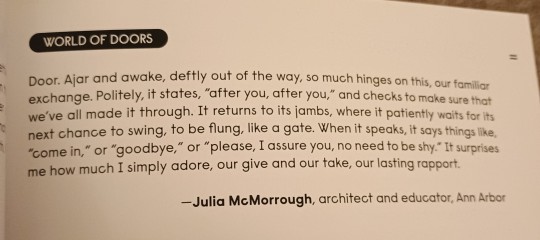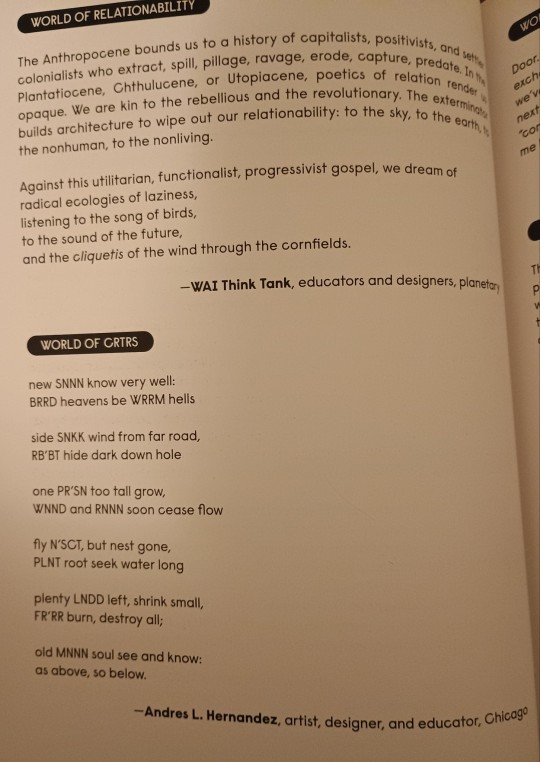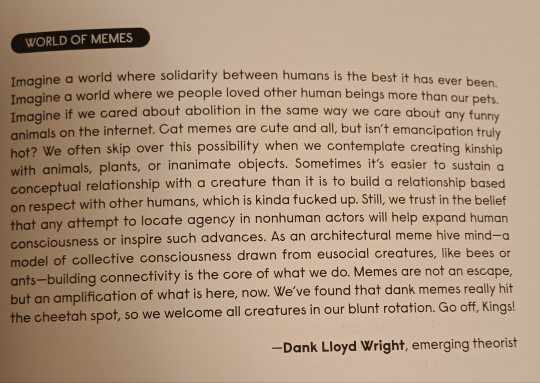#objtheory
Explore tagged Tumblr posts
Text
Blabbing more about this. I do strongly suspect that OS wouldn't have been as common as it is if it weren't for industrialization and Modernism running its course. More discussion on animistic theory and critique below the readmore.
While there would have been object attraction somewhere, someone, sometime, I don't think it would be to a culturally-relevant degree. This may be largely due to anthropologist's bias, but there is virtually no recorded discussion on or evidence of object sexuality in even highly animistic civilizations*. It likely existed somehow, as all sexuality does, but was very, very rare or otherwise not noteworthy to talk about/record.
Whatever strange thing happened with the turn of the 20th century, that extreme crisis and overhaul in society and relationships--I doubt that there'd be this many objectum people running around if it never happened.
This isn't entirely unfounded, either. Although very decidedly not objectum (and do not contact him about it, please, he's likely hostile) scholar Achille Mbembe** claims that the current resurgence on animism is wholly because late-stage capitalism is defined by a reinvention of animism. I don't fully agree with animism being exclusively a symptom of late-stage capitalism, especially given that I follow Papapetros's analysis that animism had only been partially suppressed by industrialization and had taken new forms as it adapted, not exorcised out of Western society entirely, in the 20th century, but I do think capitalism reaching its bloody maturity is a unique pressure that's resulting in interest in animism as well as objectum rapidly gaining numbers. Also add in the pandemic.
*animism as used for non-Western civilizations is a somewhat-problematic term, given the colonialist history of its coining by anthropologist Tylor being used to flatten all nuance and vast difference between non-Western civilizations. But my point is more broadly that even in across the societies described as animistic, there is virtually no record of any sort of object attraction. On this note, fetishism in an anthropological sense does not usually refer to any sexual or romantic attraction.
**Mbembe specifically claims that the animism he's referring to is the co-ecological kind, referring more to networks of community and ecology, rather than the old anthropological meaning of "seeing objects as living/animate" which is closer to objectum's meaning. There is so much goddamn nuance about all of this augh i want to Talk Endlessly about it. I want to bounce ideas off of someone else because I'm sure I'm missing something glaring in my analysis.
4 notes
·
View notes
Text



A smattering of bits I like from the foreword section of Creatures are Stirring: A Guide to Architectural Companionship
#yes im on my rereading bullshit again. be happy it's not a dry page long textwall from On the Animation of the Inorganic#objtheory
1 note
·
View note
Text

Animistic and architectural theory
On the Animation of the Inorganic discussing Alfred Kubin's novel The Other Side in the chapter "Malicious Houses". One of my favorite paragraphs of the entire book with it's discussion of the "dark language of houses" seen in this little strange corner of Modernist writing and art.
I'm sure this would mortify the author, but the idea of buildings wresting agency for themselves, often to the detriment of their inhabitants and human neighbors is hot. No other way to put it.
ID below the readmore.
[In Meyrink the houses speak with a "suspicious, malicious grudging," but the things they say are what one fundamentally refuses to hear: "You're not done with us yet; you belong to us; we don't desire your happiness; happiness doesn't go with this house". (41) Although the houses' speech seems to be the sign of their malevolent omnipotence, in fact, it is nothing more than the mixed mumbling--curses and sighs--of their downfall. In the finale of Kubin's urban anti-utopia, temples and houses "clambered on top of one another" are heard to "utter strange words in a horribly loud rasping tone--a dark, incomprehensible language of houses." (42) While ostensibly attached to ancient doctrines of architecture parlante, Kubin's and Meyrink's constant noises announce the immolation and rebirth of an autonomously animated architecture. This building for is essentially mute--no more "whistling" or "grinning"; nevertheless, it is an architecture of "full speech" emptied of all anthromorphic chatter. END ID]
#objectum#i kinda want to make a new tag for like. high level discussions on ani//mistic thought in objectum because this doesn't quite fit in the#normal an//imism tags where it's usually a bunch of pagans that probably haven't ever heard that there's a bunch of people#who fall in love with various objects and whom also can be called ani//mists. we go about our ani//mism in very different ways#but this doesn't quite fit in the main objectum tag either. im not posting these That regularly but I would feel bad if I was doing it more#people come to the objectum tag to see kissy kissy object not a textwall from a book#and this doesn't quite fit in the posictags either since most of that is directly object companionship and not really interested in discuss#ng very dry ani//mistic theory#anyways ill stop blathering on but if anyone has a suggestion for a tag/term i can use im all ears#objectum theory?#objtheory?
4 notes
·
View notes